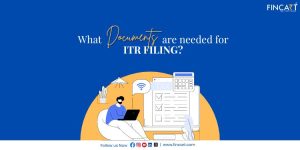Table of Contents
ToggleEvery time the tax season rolls around we’ve all got one question on our mind – So how can we save tax on salary? It’s understandable too of course, we all would like to save as much of our hard-earned money as possible, so here’s the good news – By taking advantage of the many tax deductions, exemptions, and benefits in the Income Tax Act, one can legally and significantly reduce their tax liabilities. But wait, there’s more! On top of providing tax benefits, the options we’ll discuss provide a great deal of other benefits. So let’s jump in and take a look at some strategies on how to save tax on salary.
How to Save Income Tax on Salary?
There are several ways you can save tax on your salary. You can claim employee benefits, invest in retirement savings accounts, save tax through insurance and loans, and invest in instruments such as mutual funds. Let’s take a detailed look into each so you can figure out the most suitable options to save tax from salary.
Saving tax by investing in options under Section 80C
One can enjoy several tax benefits by investing in instruments specified under Section 80C of the Income Tax Act. This section is a goldmine for taxpayers because it offers many ways to reduce taxable income and maximise savings. By investing in Section 80C options, one can claim deductions of up to Rs. 1.5 lakh per year. Some of the investment options are:
Public Provident Fund
This is a government-backed savings scheme that is designed to encourage long-term savings. For this reason, PPF is a popular vehicle for retirement planning. But that’s not all. PPF offers a 7%-8% interest rate, and falls under the category of EEE (Exempt Exempt Exempt), meaning you won’t have to pay tax on the deposits you make, the interest you earn, or the maturity amount.
This scheme has a lock-in period of 15 years, and one can avail of it at a post office or most banks.
National Savings Certificate:
NSC is another government-backed scheme where the return is announced regularly. Generally, the returns are low but fixed somewhere in the region of 6.5 to 8%. NSC has a lock-in period of 5 years, which makes it a good option for conservative investors looking to save for medium-term goals while having tax. One can purchase NSC at a post office.
National Pension System
NPS is regulated by the Pension Fund Regulatory and Development Authority (PFRDA) and is a voluntary investment scheme specifically to help citizens in their golden years. According to Section 80 CCD (1) of the Income Tax Act, investors can claim benefits up to 10% of their income, and they can also claim benefits up to Rs. 50,000 under Section 80CCD (1B). Investments in NPS are locked until retirement. Investors can select where to invest, such as in equity, corporate bonds, or government bonds, leading to varying returns. For example, conservative investors may go for government bonds for safety, while younger investors, who can take on more risk may lean towards investing more in equity for much higher returns.
Employees Provident Fund
EPF is also a retirement savings scheme. In EPF, both the employer and employee contribute 12% of the employee’s salary every month towards the fund. While the entire 12% of your contribution goes to the EPF account, only 3.67% of your employer’s contribution goes to the account. The rest of the employer’s contribution goes toward the employee’s pension scheme.
Sukanya Samriddhi Yojana
SSY can be a tax-saving investment option for investors with a girl child under the age of 10. Since the interest earned and the maturity amount are tax-free, SSY also falls under the category of EEE. The lock-in period for this scheme is 21 years or until the child reaches the age of 18, whichever is earlier.
Senior Citizen Saving Scheme
SCSS is designed for senior Indian citizens, that is people over the age of 60. It offers a higher interest rate compared to fixed deposits, but the interest earned on SCSS deposits exceeding Rs. 50,000 in a year is taxable. This makes SCSS fall under the ETE (Exempt Taxed Exempt) category, which means the principal amount and maturity are exempt, while the interest is taxable.
Tax Saver Fixed Deposits
As the name suggests, tax saver FDs are fixed deposits that provide tax benefits. The lock-in period for this option is 5 years. As the interest is taxable, these FDs also fall under the ETE category. This option is ideal for investors who prioritise safety, but its low-risk profile also means the returns are modest.
Equity Linked Savings Scheme
ELSS is a type of mutual fund that primarily invests in equity. Out of all the tax saving instruments under Section 80C, ELSS has the potential to have the highest returns, but due to their market-linked nature equity mutual funds have a higher level of risk. This fact makes ELSS a suitable option for investors with a higher risk tolerance and a longer investment horizon. The lock-in period for ELSS is also only three years, which is the shortest out of all other 80C options, but that is mainly for tax-saving purposes. Investors choosing ELSS should always invest with a long-term mindset due to the short-term risks associated with equity. Investments with returns below Rs. 1 lakh in a year are exempt from tax, however, if returns exceed this Rs. 1 lakh, long-term capital gains tax of 10% is levied.
Unit Linked Insurance Plan
ULIP is a financial product that combines insurance and investment and has a lock-in period of 5 years. A pure protection term plan has no maturity benefit, but a ULIP has a sum assured as well as a maturity benefit. Due to this the cost of a ULIP premium is also higher compared to that of a pure protection term plan. A part of your premium is allocated to provide coverage, while the rest of the amount is invested in equity, debt, or hybrid mutual funds. Based on your risk tolerance, you can choose the plan most suited to you. Another advantage is that ULIPs allow you to freely rebalance your portfolio between debt and equity mutual funds, so no capital gains tax is applicable.
Also Read : Best Tax Saving Investment Options for FY 2024-25
Don’t fall behind your taxes!
Get in touch with Fincart to handle your taxes and optimize your savings.
Saving tax on salary through loans, donations, and health insurance.
Health Insurance
Under Section 80D of the Income Tax Act, one can claim deductions on any premiums paid for health insurance policies for self, partner, children, and parents. When including health insurance coverage for a spouse and children, you can claim up to Rs. 25,000 as a deduction. A deduction of Rs. 25,000 is allowed for parents, and if your parents are senior citizens an additional deduction of Rs. 25,000 can be claimed. So a total of Rs. 50,000 can be claimed as a deduction for senior parents.
Home and Education Loan
According to Section 24(b) of the Income Tax Act, if you have a housing loan, the interest paid towards it is eligible for tax deduction up to Rs. 2 lakh per year. In case you buy a house and give it on rent, the entire interest paid on the housing loan is eligible for deduction without any upper limit, which means that there is no cap on the amount of interest that can be claimed as a deduction for a rented-out property.
Under Section 80E of the Income Tax Act, any interest you pay on education loans for higher education qualifies for tax deduction, whether the loan is taken for yourself, your spouse, or your children. There is no upper limit on the amount of deductions you can claim.
Donations
Under Section 80G, any donations you make toward charities/NGOs qualify for a tax deduction. You can reduce your taxable income by the amount you donate. For most NGOs, you can claim a tax deduction of up to 50% of the donated amount, limited to 10% of your adjusted total income. If you donate to a political party, however, you can claim up to 100% of the donated amount if you meet certain criteria under Section 80GGC.
Some other ways to save tax
House Rent Allowance
HRA is an allowance used by employees to cover rental expenses. It can be claimed under Section 80GG and it can help you save some taxes. The amount of HRA exempt from tax is calculated based on the least of the following amounts: actual HRA received from the employer, 50% of basic salary (for employees in metro cities) plus DA, 40% of basic salary (for employees in non-metro cities) plus DA, and actual rent paid minus 10% of salary plus DA.
Leave Travel Allowance
LTA is an allowance that covers your travel expenses when you go on leave with your family within India. In 4 years, LTA can be claimed twice and can reduce your tax liabilities.
Gratuity
Gratuity is a retirement benefit one gets from their employer after one completes five years of service in the company. This amount is paid after retirement or resignation.
Meal coupons
Meal coupons provided by employers for meals during working hours are also exempt from tax up to Rs. 2,600 per month as per the Income Tax Act.
Other
Other exemptions include exemption on internet or phone-related expenses, the car leased by the employer, and leave encashment.
Hiring a Tax Advisor
Besides these strategies, another wise step you can take to save tax is to consult with tax advisor. A tax advisor can minimise your tax liabilities by analysing your financial situation and recommending the most suitable investment options based on your financial goals, risk tolerance, and time horizon. But it doesn’t end there.
A key advantage of dealing with a professional is that they know all the rules inside out, so there is no room for mistakes. A tax advisor will make sure you stay compliant and can guide you through the ITR filing process and mitigate the risk of penalties. On top of that, they can keep you informed about new tax regulations so you will stay updated to optimise your tax planning.
Conclusion
The Income Tax Act offers many exemptions and deductions to help taxpayers reduce their liabilities, so it becomes important to understand each option thoroughly before deciding the ones most suited to you. The 80C investment options such as PPF, ELSS, and NSC not only offer tax savings but also help you grow your money so you can realise your financial dreams.
A ULIP can potentially yield very high returns while financially safeguarding your loved ones. Health insurance offers tax benefits while also shielding your family from costly medical bills. Such products form a key part of your financial plan as they grow your wealth, and offer protection to you and your family while reducing your tax obligations. Consult a tax planner to get the most out of your tax planning journey and remember, every penny you save is a penny you earn.




